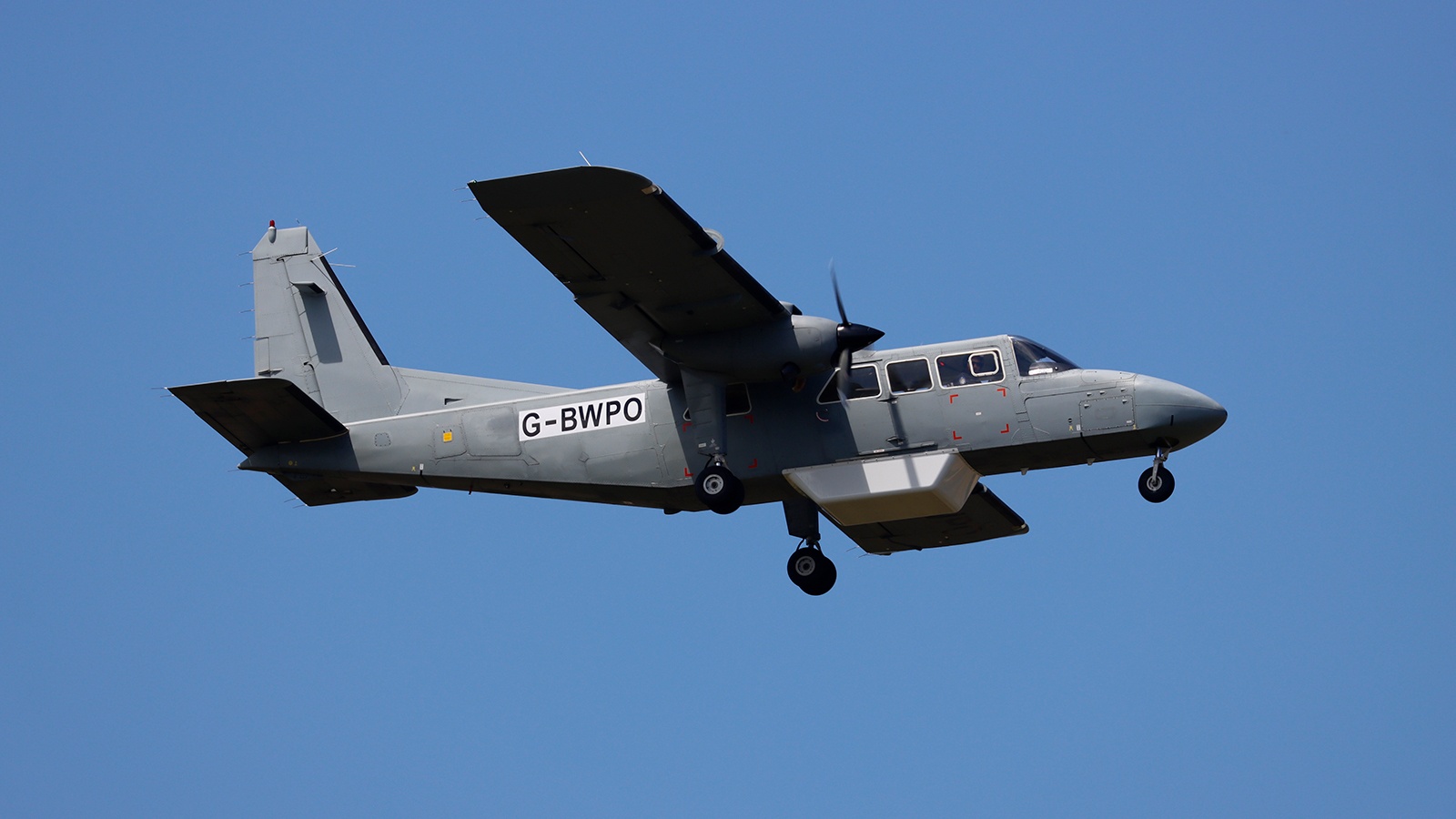
Jack Loughran Wed 24 Jul 2024
Collected at: https://eandt.theiet.org/2024/07/24/aircraft-fitted-5g-antenna-array-could-provide-internet-disaster-zones
A group of UK companies have trialled an airborne 5G system that can provide internet coverage on the ground from an overhead aircraft.
Cambridge-based Stratospheric Platforms Limited (SPL) is leading the design of the new technology with demonstration flights provided by manufacturer Britten-Norman.
SPL said the technology could offer numerous valuable applications, such as quickly restoring networks after major disasters including earthquakes or tsunamis, where traditional mobile network infrastructure has been disrupted.
A trial was conducted last week by Britten-Norman’s Flight Test Organisation that aimed to demonstrate the aircraft’s capability to operate safely with a large 5G phased array antenna installed. The trial tested aircraft performance and handling in both normal and emergency operation as part of efforts to support full certification of the system.
The team chose Britten-Norman’s turboprop BN2T-4S Islander aircraft for its robust design, all-weather capability, endurance and payload capacity. In addition, the aircraft’s modular design makes it easy to integrate large mission system payloads.
The technology has the potential to offer connection speeds of up to 200Mbps over a 15,000km2 area. The next phase of the project involves demonstrating the technology via a connection to a private UK-based national 5G telecommunications network.
Richard Deakin, SPL CEO, said the project could “revolutionise how the world stays connected” in remote and underserved regions.
“We believe that our cutting-edge technology will provide unprecedented opportunities for global communication and create a more connected and inclusive world,” he added. “Today’s flight test is an important step in the continuing validation of our technology breakthroughs.”
Dr Garnet Ridgway, head of flight dynamics at Britten-Norman, said: “The large and complex nature of the system places significant demands on the host aircraft. However, the BN2T-4S performed admirably; the combination of payload capacity, endurance, climb performance, twin engine reliability, robustness and electrical power generation makes it unbeatable for this mission.”
The Elon Musk-founded Starlink operates a constellation of over 3,000 satellites in low-Earth orbit that can also provide broadband-quality data services to rural areas not served by traditional radio towers.
The firm was recently forced to deorbit 20 of its satellites after a faulty rocket launch meant they could not achieve the orbit they needed to remain in space.

Leave a Reply